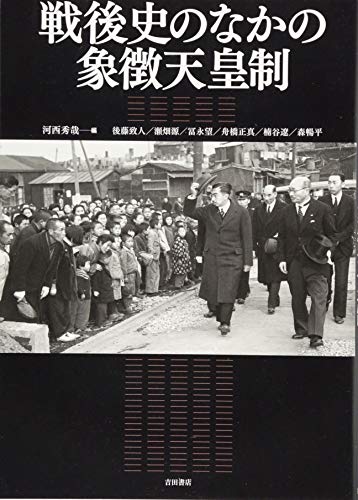8 0 0 0 OA 戦後政治における昭和天皇の位置
- 著者
- 後藤 致人
- 雑誌
- 岩手県立大学盛岡短期大学部研究論集 = Bulletin of Morioka Junior College Iwate Prefectural University (ISSN:13489720)
- 巻号頁・発行日
- vol.2, pp.57-68, 2000-03-26
Although it is generally said that the Emperor Showa did not engage in politics in the post-World War II period, this widespread view is grounded not on the verification of the actual political form but on the argument which derives from an interpretation of the Constitution of Japan. In recent years several important records and diaries have been published, for example The Diary of Mamoru Shigemitsu, The Diary of Hitoshi Ashida, The Diary of Eisaku Sato and The Diary of Sukemasa Irie. These writers were at the center of the postwar politics. In this paper, using the documents cited above I demonstrated that both "naiso" and "gokamon" were frequent between the Emperor and the cabinet even in the postwar period. Based on this demonstration, I considered the following: 1) why "naiso" and "gokamon" were able to continue in the postwar politics, given the Emperor's intervention in politics, and 2) how they influenced the postwar politics. Furthermore, I examined the position of the Emperor Showa in the post-World War II politics.
7 0 0 0 OA 孝明新政府における新選組の位置
- 著者
- 後藤 致人
- 出版者
- 愛知学院大学文学会
- 雑誌
- 愛知学院大学文学部紀要 = Bulletin of the Faculty of Letters of Aichi Gakuin University (ISSN:02858940)
- 巻号頁・発行日
- no.42, pp.234-223, 2013-03-10
7 0 0 0 昭和戦前期の海軍と皇族 : 高松宮をめぐって
- 著者
- 後藤 致人
- 出版者
- 愛知学院大学
- 雑誌
- 愛知学院大学文学部紀要 (ISSN:02858940)
- 巻号頁・発行日
- vol.36, pp.1-10, 2006
3 0 0 0 OA 『昭和天皇独白録』をめぐる 天皇の記憶と論理(その1)
- 著者
- 後藤 致人
- 出版者
- 愛知学院大学文学会
- 雑誌
- 愛知学院大学文学部紀要 = Bulletin of the Faculty of Letters of Aichi Gakuin University (ISSN:02858940)
- 巻号頁・発行日
- no.51, pp.290-271, 2022-03-10
2 0 0 0 IR 戦後政治における昭和天皇の位置
- 著者
- 後藤 致人
- 出版者
- 岩手県立大学盛岡短期大学部
- 雑誌
- 岩手県立大学盛岡短期大学部研究論集 = Bulletin of Morioka Junior College Iwate Prefectural University (ISSN:13489720)
- 巻号頁・発行日
- vol.2, pp.57-68, 2000-03-26
Although it is generally said that the Emperor Showa did not engage in politics in the post-World War II period, this widespread view is grounded not on the verification of the actual political form but on the argument which derives from an interpretation of the Constitution of Japan. In recent years several important records and diaries have been published, for example The Diary of Mamoru Shigemitsu, The Diary of Hitoshi Ashida, The Diary of Eisaku Sato and The Diary of Sukemasa Irie. These writers were at the center of the postwar politics. In this paper, using the documents cited above I demonstrated that both "naiso" and "gokamon" were frequent between the Emperor and the cabinet even in the postwar period. Based on this demonstration, I considered the following: 1) why "naiso" and "gokamon" were able to continue in the postwar politics, given the Emperor's intervention in politics, and 2) how they influenced the postwar politics. Furthermore, I examined the position of the Emperor Showa in the post-World War II politics.
2 0 0 0 戦後史のなかの象徴天皇制
- 著者
- 河西秀哉編 後藤致人 [ほか著]
- 出版者
- 吉田書店
- 巻号頁・発行日
- 2013
1 0 0 0 二人の内大臣 : 牧野伸顕と木戸幸一の関係
- 著者
- 後藤 致人
- 出版者
- 吉川弘文館
- 雑誌
- 日本歴史 (ISSN:03869164)
- 巻号頁・発行日
- no.799, pp.64-73, 2014-12
1 0 0 0 近代国家における天皇・華族社会の研究
- 著者
- 後藤 致人
- 出版者
- 鷹陵史学会
- 雑誌
- 鷹陵史学 (ISSN:0386331X)
- 巻号頁・発行日
- no.43, pp.3-21, 2017-09
